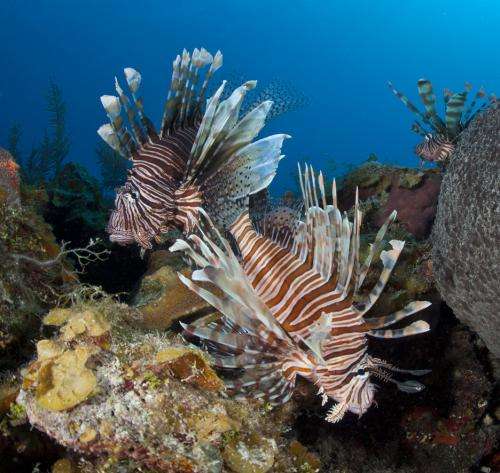Lionfish found following the current trend

In findings published today in the Marine Ecology Progress Series, researchers have found that ocean currents may explain why the Indo-Pacific lionfish Pterois volitans living in the Atlantic is yet to make its way to Brazil.
Researchers have investigated migration patterns of lionfish in the area and found that the species migrations are more common in the direction of the North Brazil Current, which flows from Brazil towards the Caribbean, than the reverse.
"Knowing that the species demonstrates infrequent migration against the currents may slow the pace of the potential invasion, which could help eradication programs in Brazil," says researcher Osmar Luiz, Macquarie University.
Since its introduction to the northwestern Atlantic around 15 years ago, the species has rapidly spread through the Greater Caribbean. Though it is predicted they will extend their range throughout most of the eastern coast of South America, they are yet to be recorded in Brazil.
Researcher do warn though currents may slow their migration, the lionfish has a suite of traits that would eventually lead it over that barrier and so these areas are still at risk.
"These results show there is still uncertainty in the scenarios that could emerge from the lionfish invasion in the Brazilian Province, and precautionary actions are recommend," says Luiz.
Journal information: Marine Ecology Progress Series
Provided by Macquarie University
















